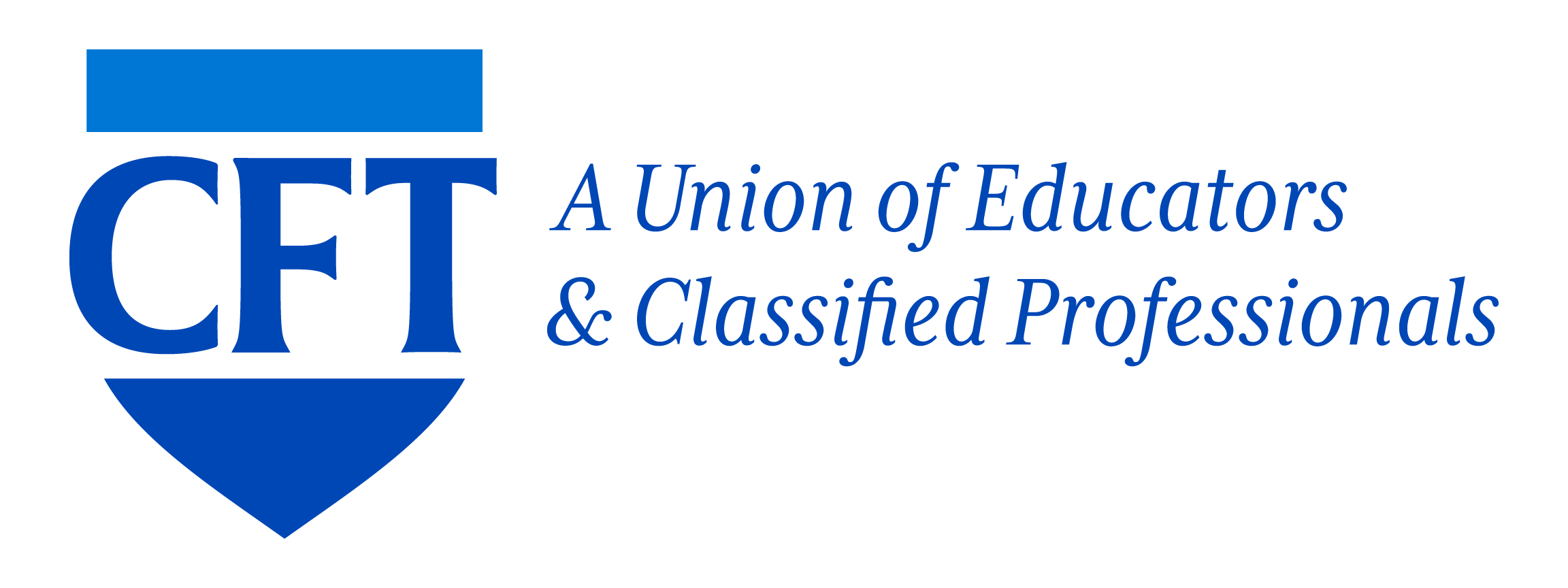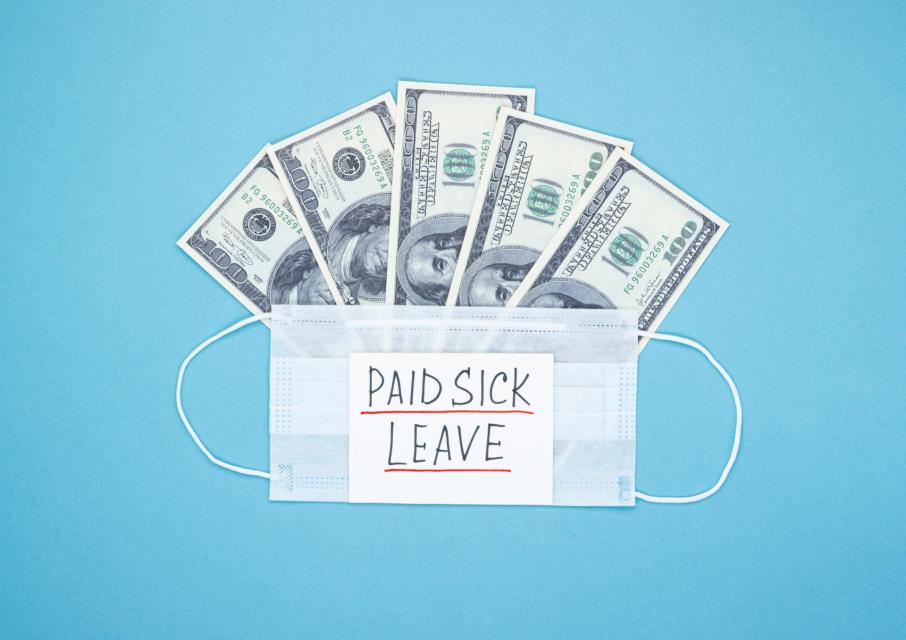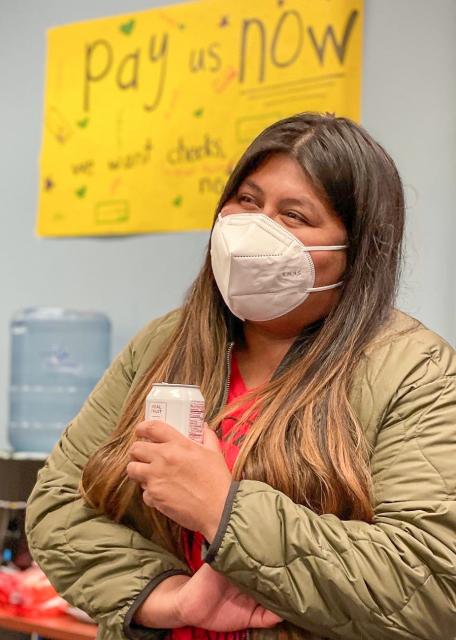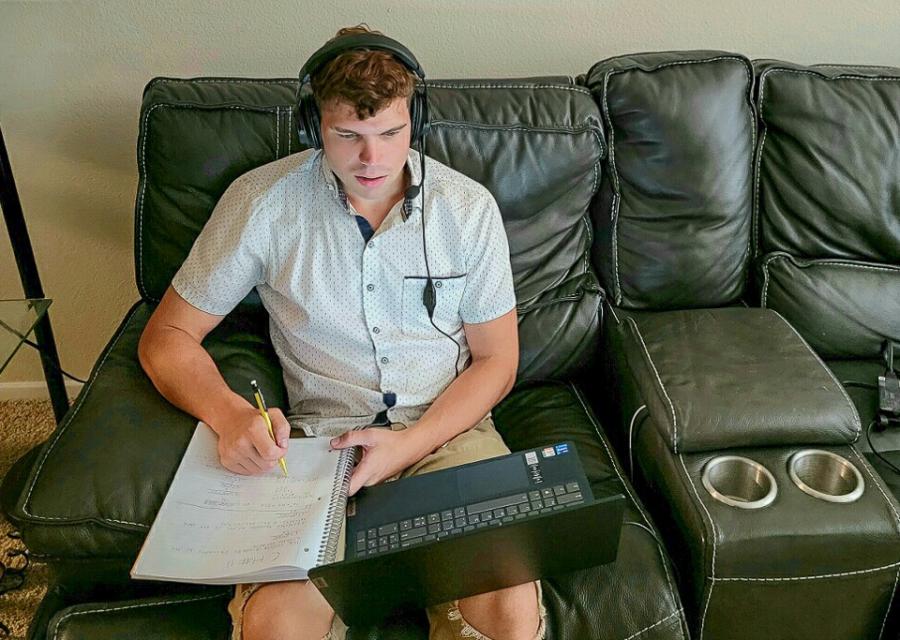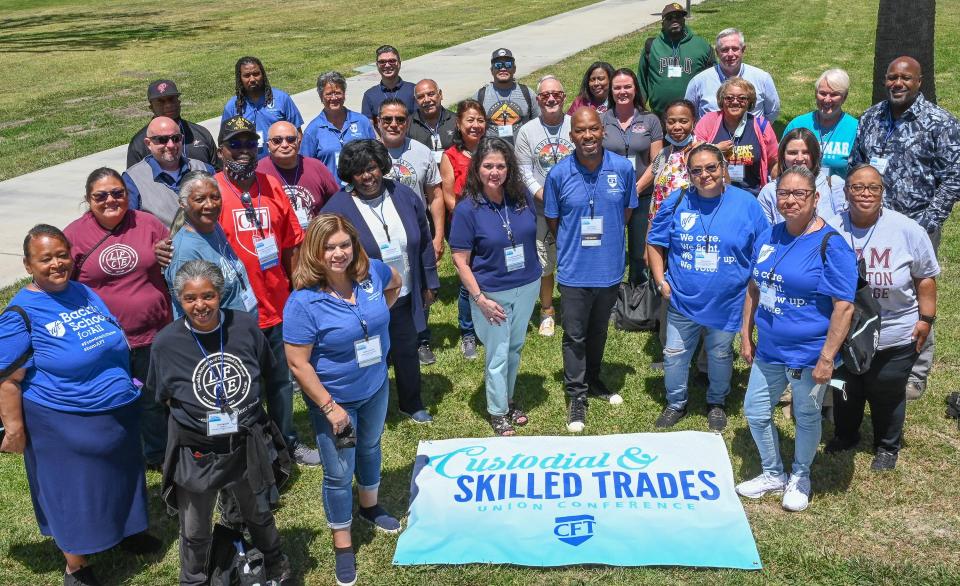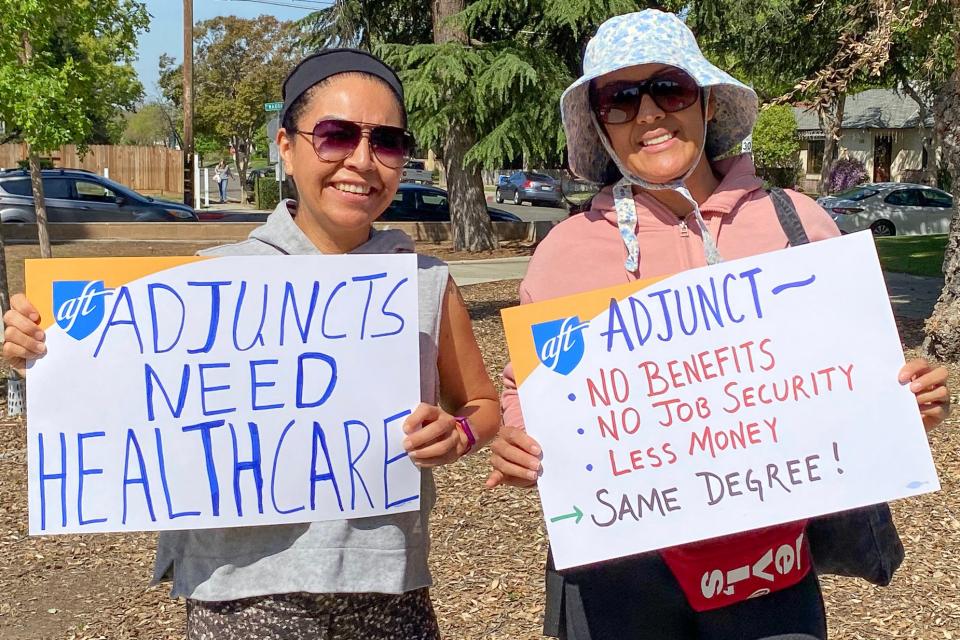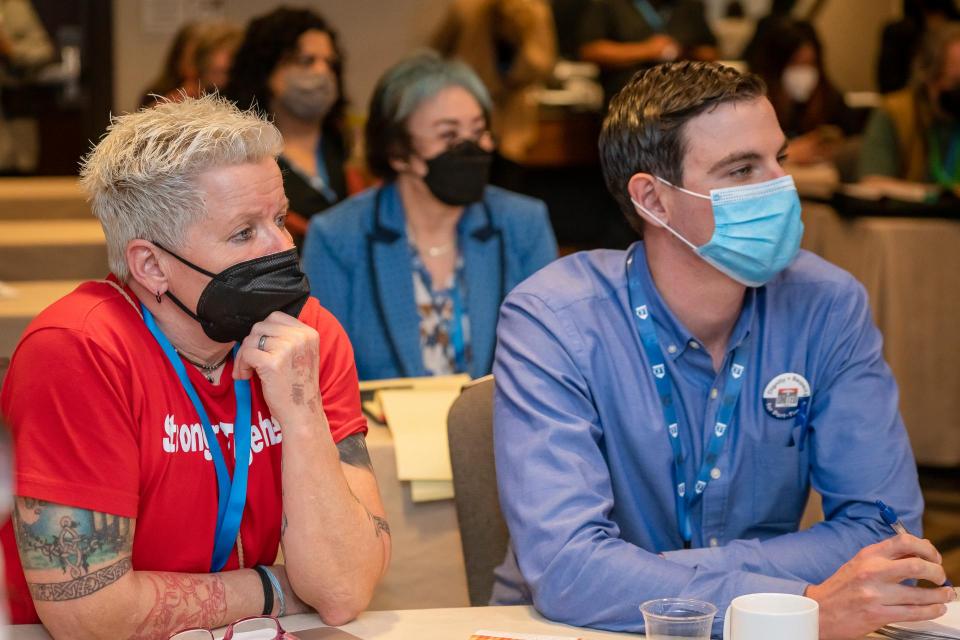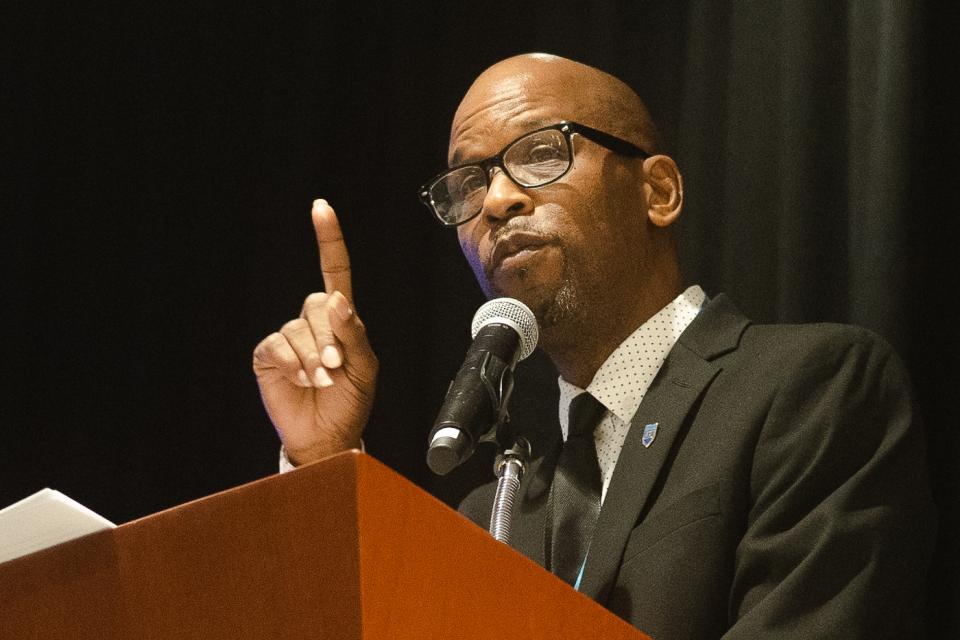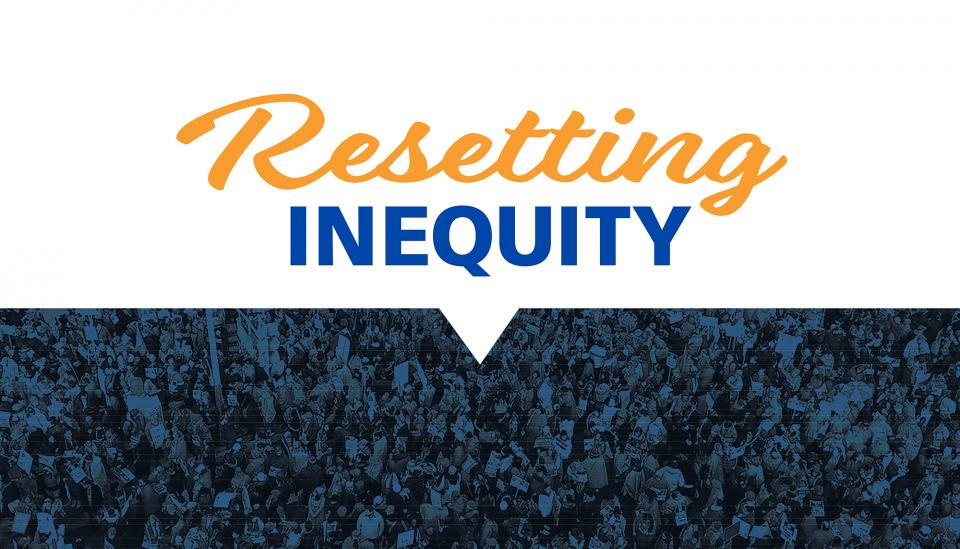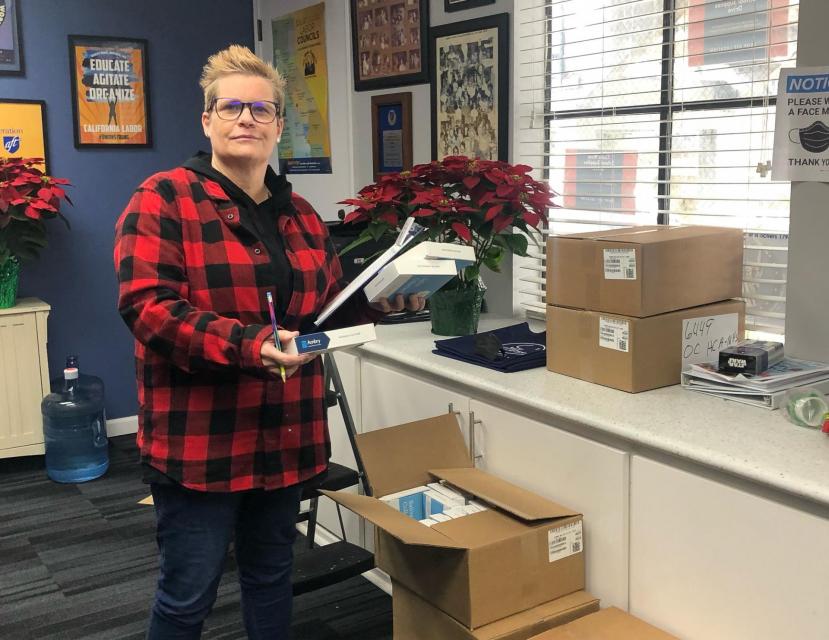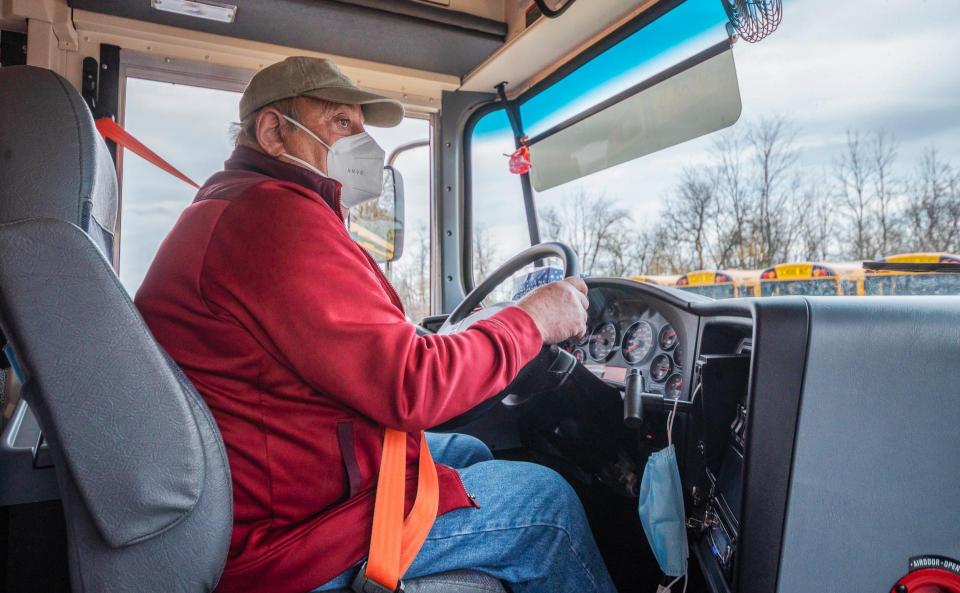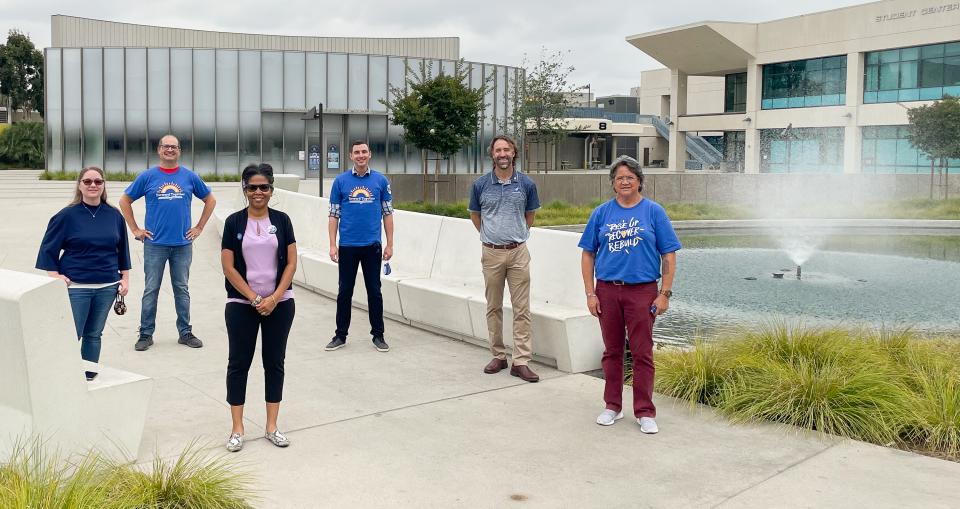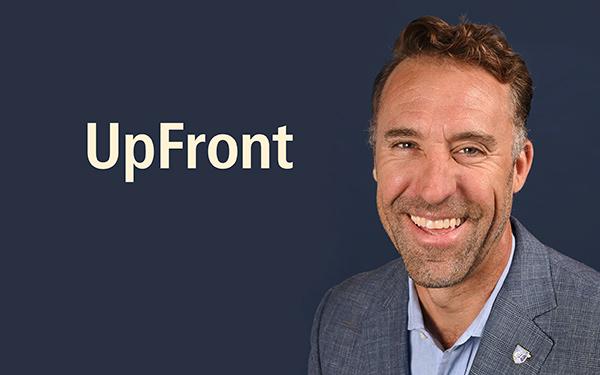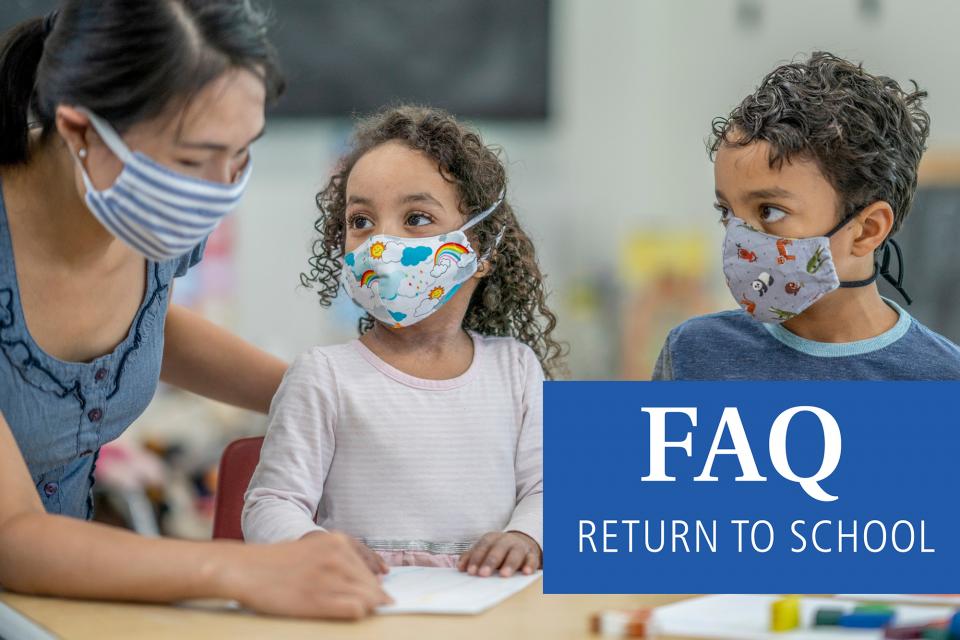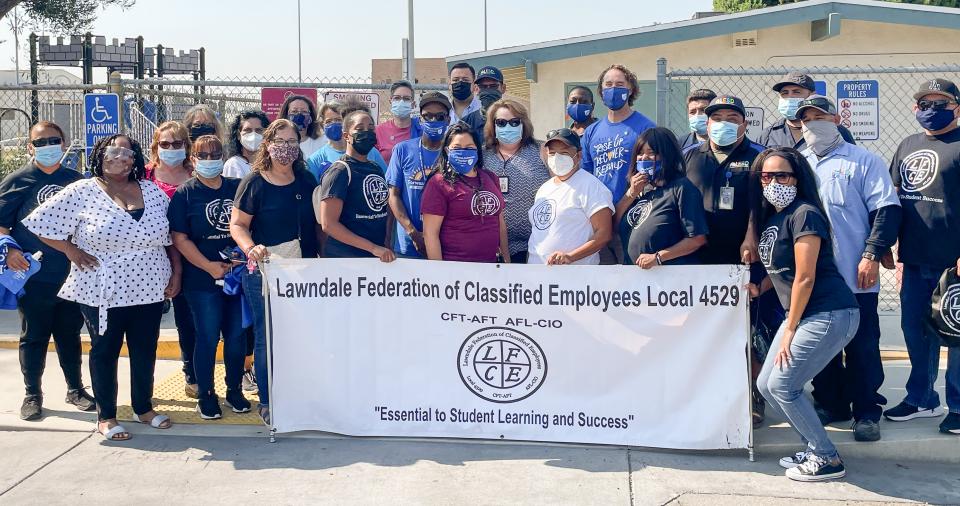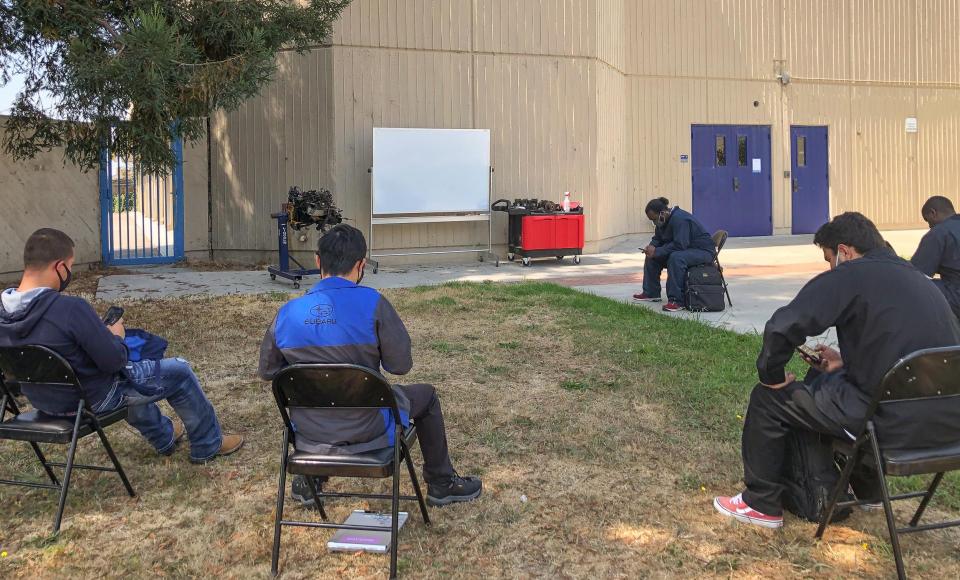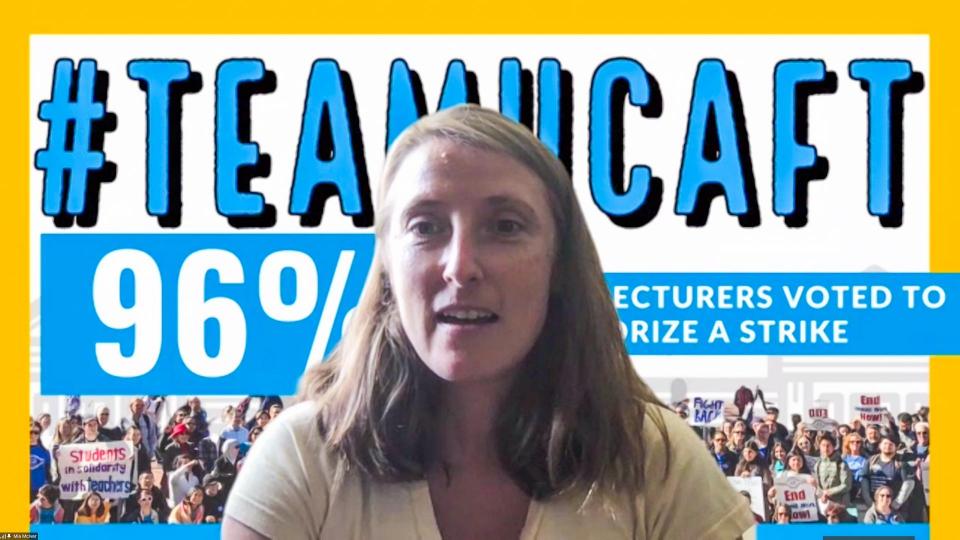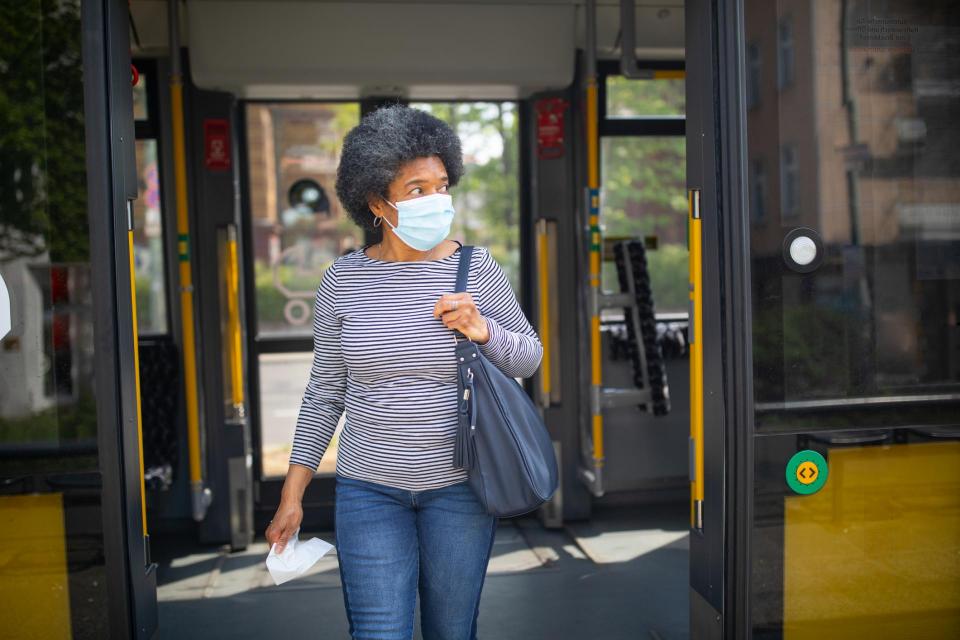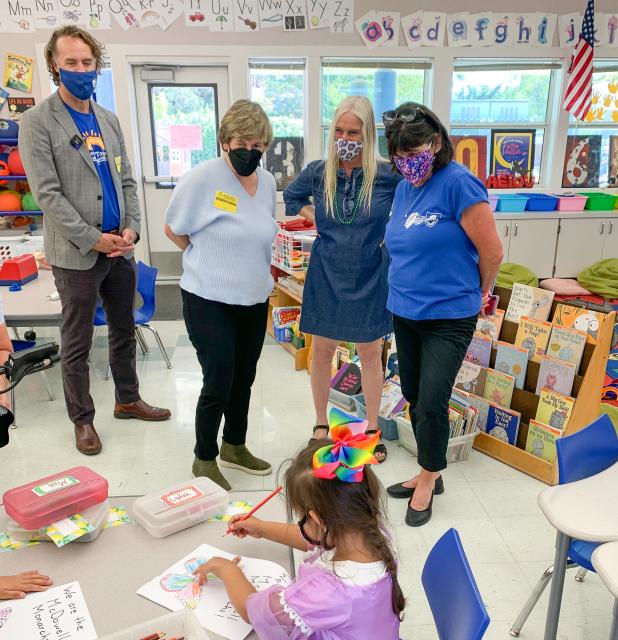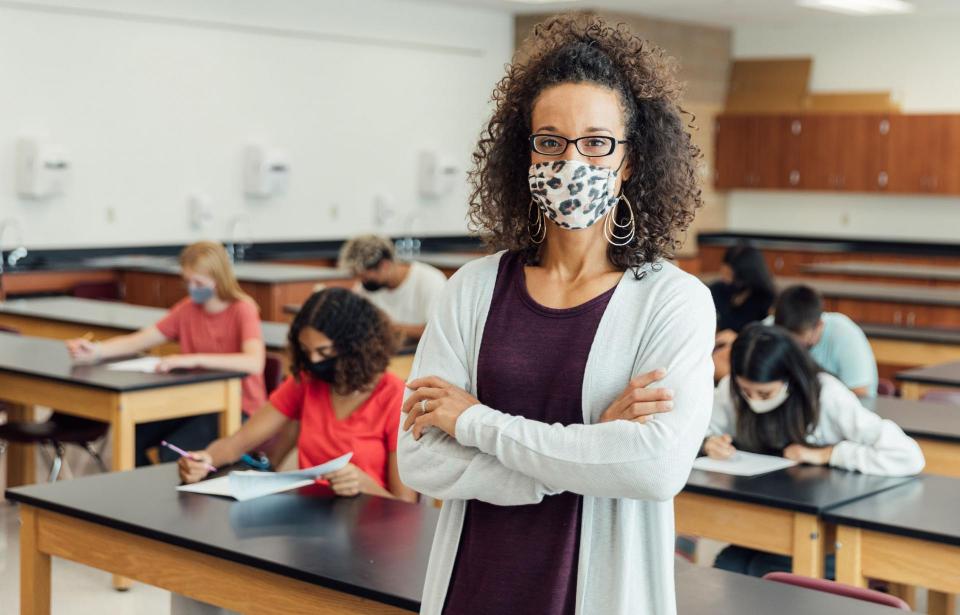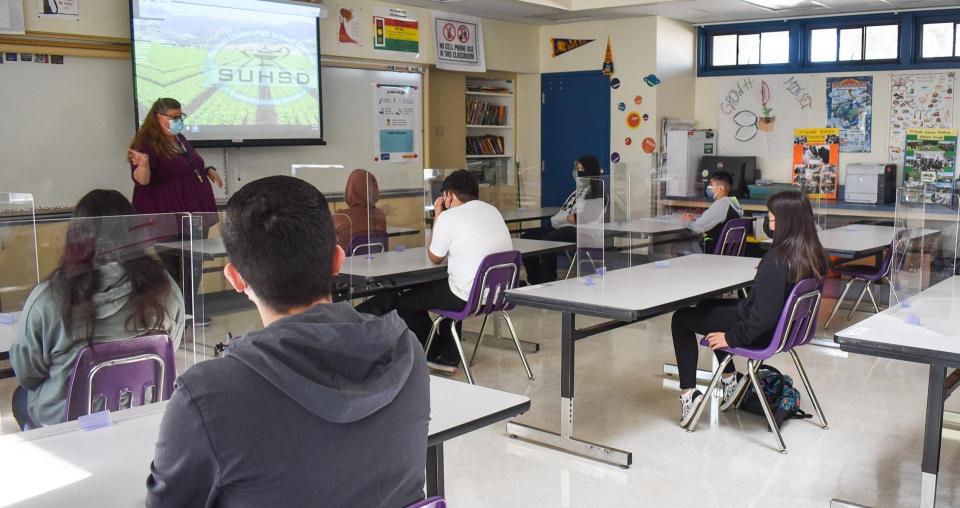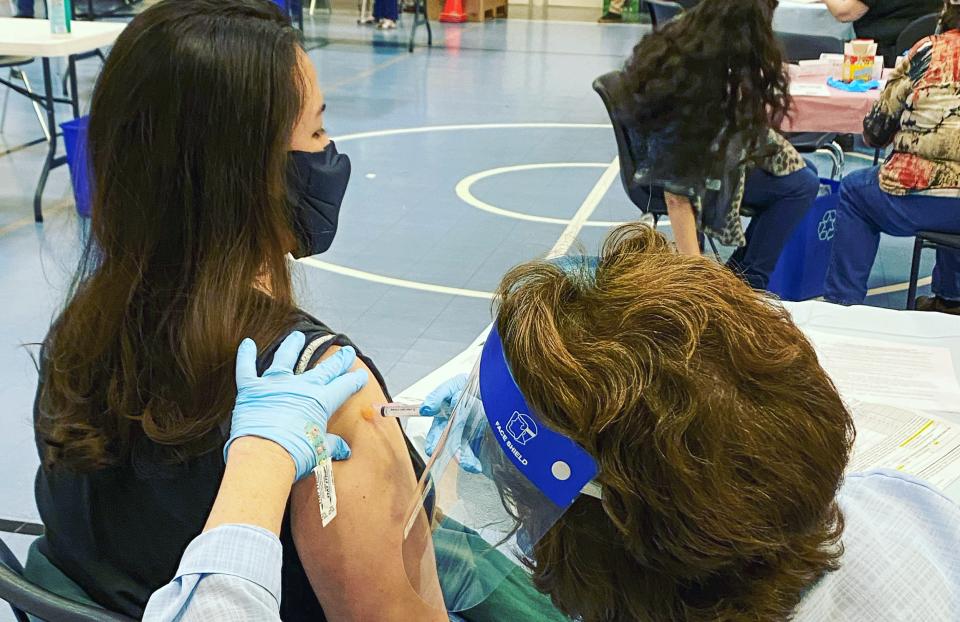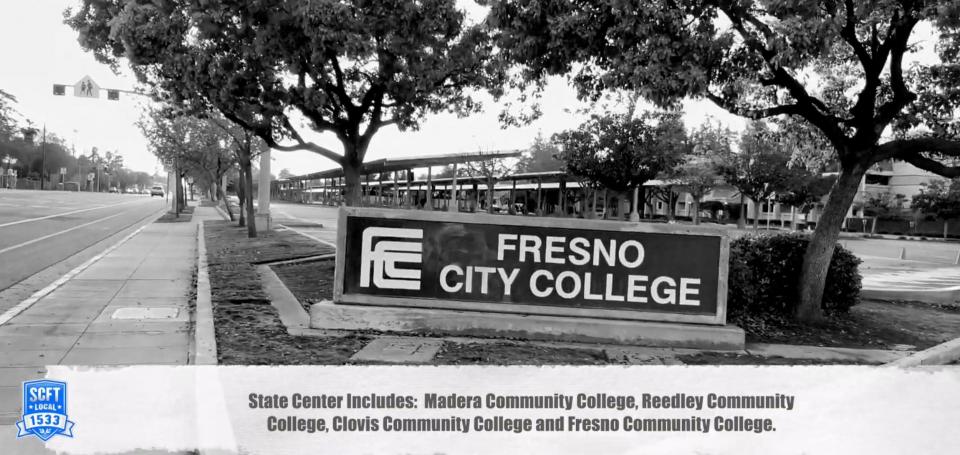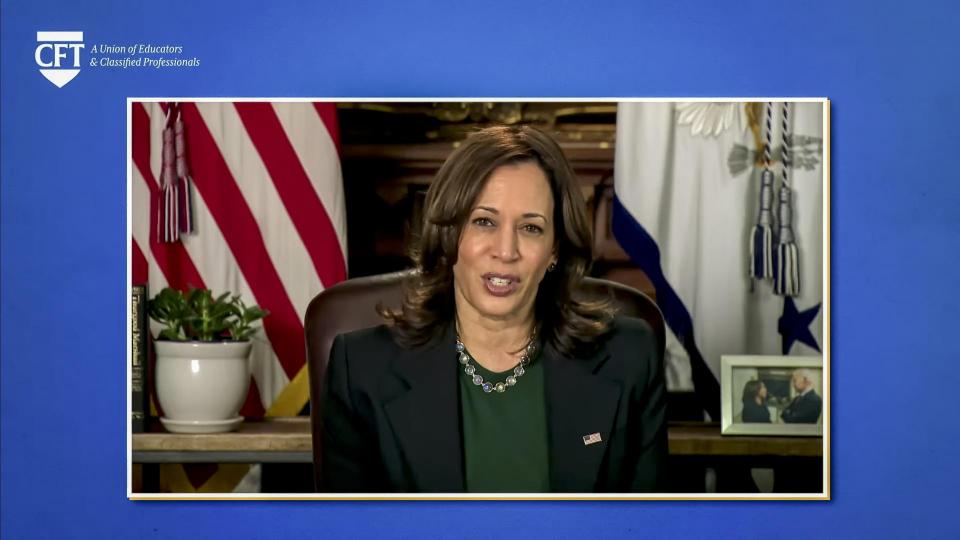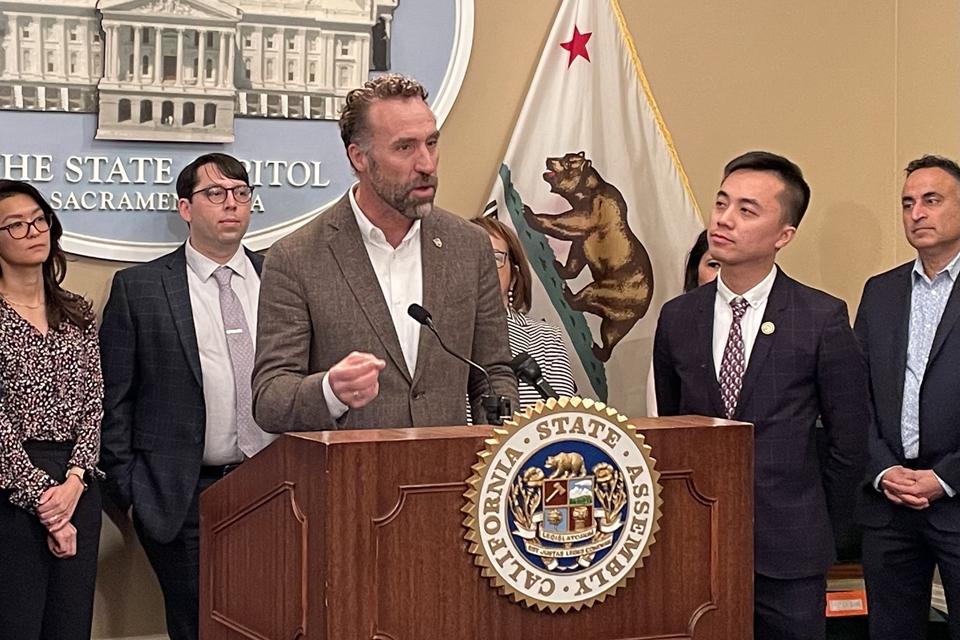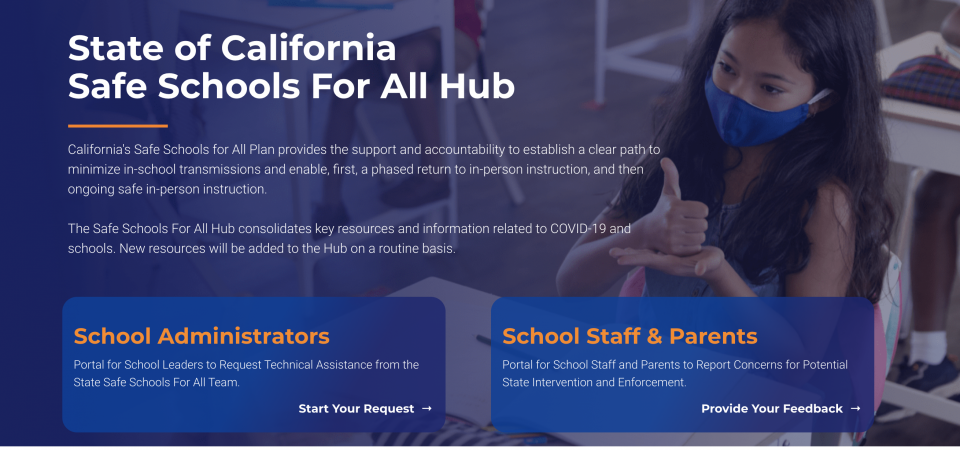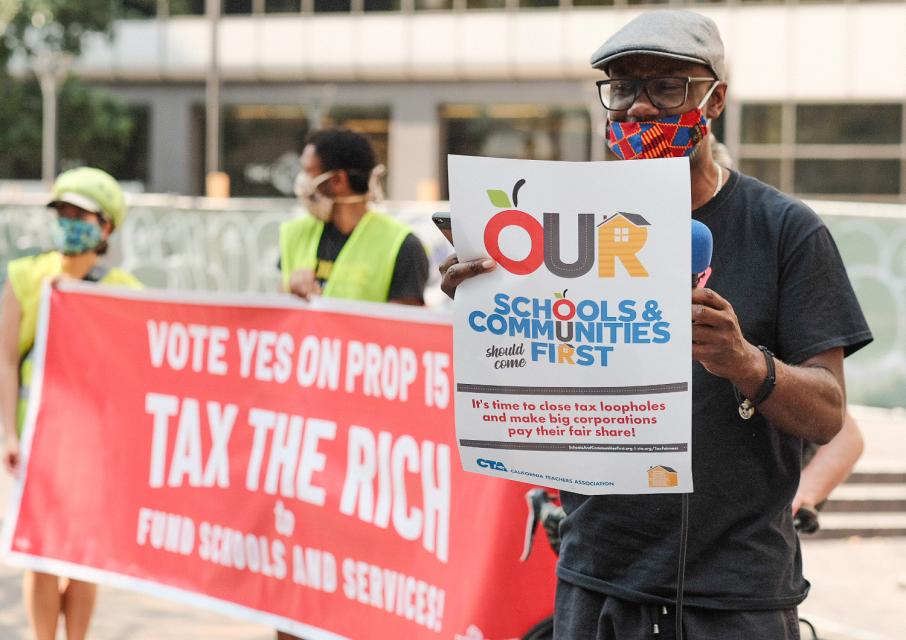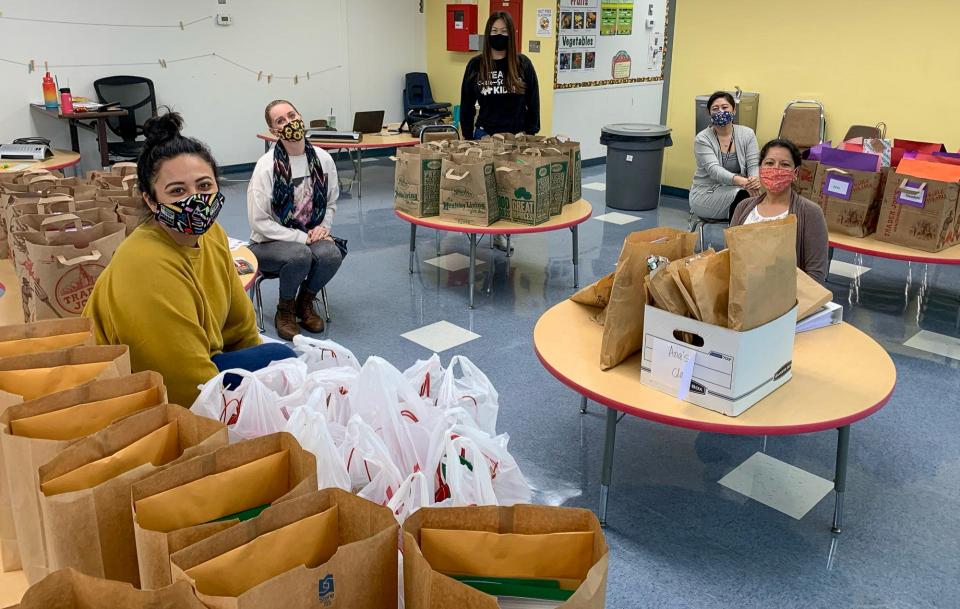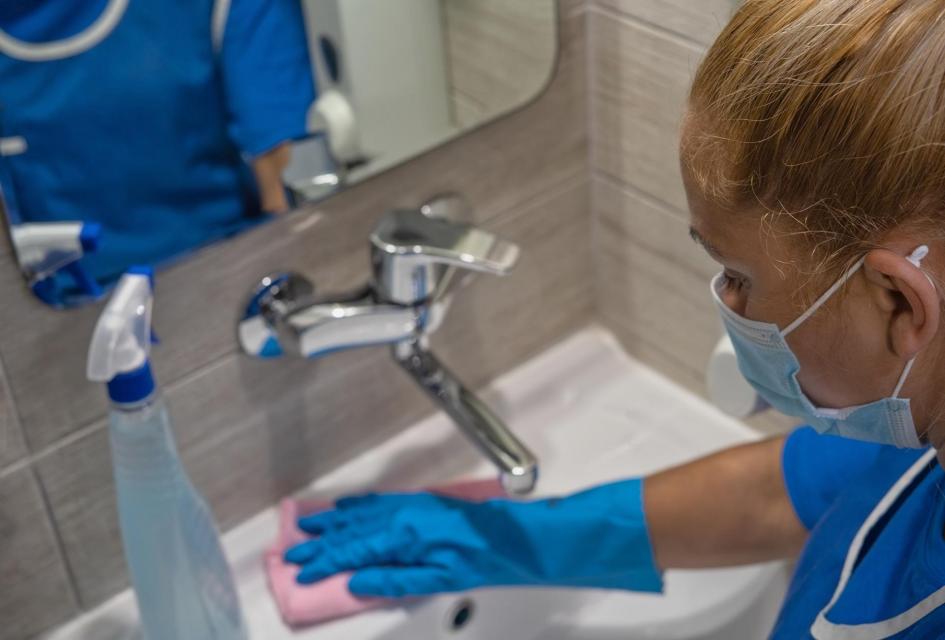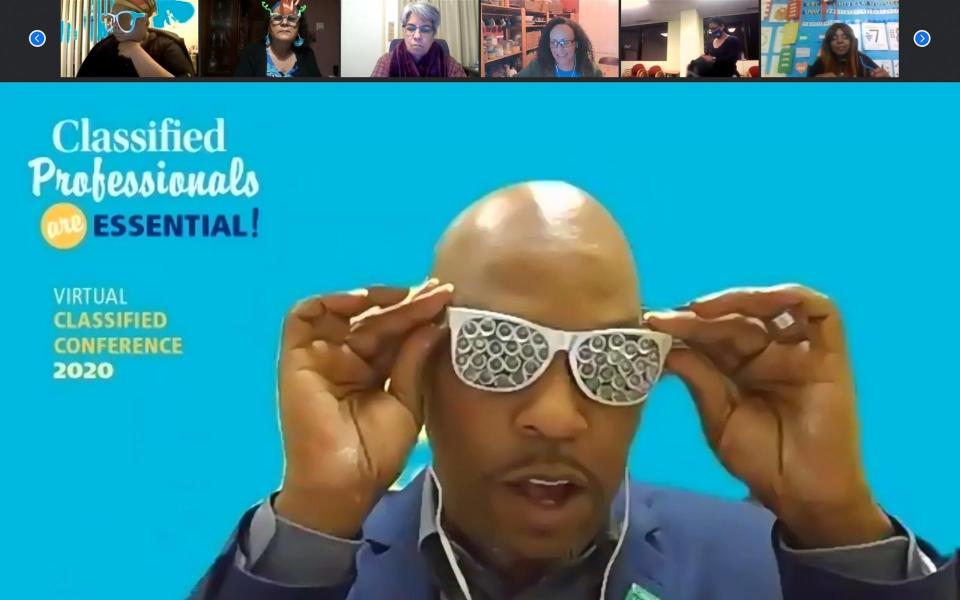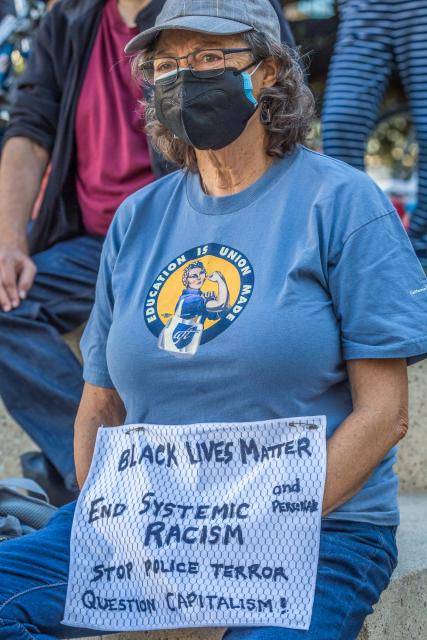Governor signs six CFT bills, plus budget trailer bills with union priorities
Legislative Update
Governor Newsom signed six union bills at the end of September that the CFT successfully lobbied in both houses of the Legislature. The CFT had sponsored or co-sponsored 16 legislative bills alongside several budget proposals in the last year of the 2020-22 legislative session. A majority of these priorities made it to the governor’s desk or were included in the state budget, with only one bill being vetoed by the governor.
What budget trailer bills mean for education workers
Legislative Update
On September 30, Governor Newsom signed the final budget trailer bills sent to him by the Legislature after passing the bills and a “budget junior” on August 31. Budget trailer bills are created by the Committee on Budget to provide technical language for the implementation of fiscal allocations. The budget junior bill includes additional allocations as well as additional items necessary for implementation of some July budget expenditures.
The budget-related bills go into effect immediately. CFT priorities in the budget trailer bills are listed below.
Governor extends COVID paid sick leave through end of 2022
New extension will sunset on December 31, 2022
Governor Newsom signed AB 152 on September 29, extending COVID-19 Supplemental Paid Sick Leave through the end of the year for California workers. This protection was originally set to expire on September 30.
This extension does not come with additional sick leave but instead gives workers access to any of their remaining COVID-19 Supplemental Sick Leave through December 31, 2022.
In our voices: The state of our schools, workers, and students
Educators report staff shortages, mental health issues are ubiquitous
Yajaira J. Cuapio has been a social worker in the San Francisco Unified School District for eight years. With the pandemic, she says the last couple of years have been challenging.
“Students have been isolated for so long that it’s having an impact on their social skills. They’re arguing and fighting, and it leads to unsafe interactions,” she said. “Then academically there have been disruptions. For one thing, a positive COVID case would cause students to have to quarantine for 10 days, and if they’re out that long, truancy is established.”
Faculty push for the face-to-face classes that students want
In-person college classes improve learning, build campus community, and lifelong connections
Joshua McCann much prefers going to campus for his San Diego Community College District classes. Now in his second year and intending to transfer to a UC and major in political science, McCann says connections on Zoom or in your Canvas inbox can’t compare to being with a person in real life.
McCann goes to campus for three out of his four classes. The other night after his philosophy class, he stayed for office hours with the teacher, and ended up having a two-hour conversation about the class with some of the other students.
Trades workers, custodians ready for increasingly dangerous workplaces
PHOTO GALLERY
CFT conference tackles tough issues of coronavirus, toxic chemicals, climate change, active shooters
Dozens of classified members from locals up and down California recently met at Compton College for the first Custodial and Skilled Trades Conference hosted by the CFT Council of Classified Employees.
“We have talked about this for years, and put it off for two years because of COVID, but here we are,” said a buoyant CCE President Carl Williams.
A “red letter year” for CFT legislation in support of contingent faculty
Healthcare insurance, teaching load, rehire rights, and parity
COVID and the subsequent student enrollment drop during the last two semesters have placed great burdens on contingent faculty, from scrambling to teach remotely to negotiating personal and family challenges to facing reduced assignments and a loss of healthcare benefits.
Continued enrollment woes create challenges for part-time faculty
Local unions finding solutions in pandemic-driven tough times
While California is showing strong signs of emerging from an economy ravaged by the pandemic, the community colleges are still reeling from the impact, most strongly demonstrated in the sharp decline in student enrollment. This has led to tough situations for many adjuncts, and for the local unions representing them.
AFT task force tackles national staff shortages in education
CFT seeks to set minimum salaries and hourly pay
COVID didn’t create the national staffing crisis we face, but the pandemic has stretched classified and certificated members so thin that some schools have been forced to shut their doors.
AFT has stepped up to the challenge and created an Education Staffing Crisis Task Force co-chaired by Carl Williams, head of the CFT Council of Classified Employees and an AFT Vice President, and Michael Mulgrew, leader of AFT’s largest local union, New York City’s United Federation of Teachers.
CFT equity bill ensures staff paid during personnel investigations
Union urges expansion of Summer Assistance Program to community colleges
“Fighting an unfair firing can be a lengthy process,” said Tina Solórzano Fletcher of San Diego’s AFT Guild, Local 1931, which represents faculty and staff at local community colleges. “Our certificated members who appeal a termination continue to receive compensation. Our classified employees should also.”
CFT analyzes governor’s proposed budget for 2022-23
Research Brief
Governor Newsom introduced a $286.4 billion budget proposal for 2022-23 on January 10. The proposed budget is 9% larger than last year’s record high budget, largely because of tax receipts that were even higher than expected. The governor’s office is anticipating a $21 billion discretionary surplus for 2022-23 and this includes billions more for education.
CFT continues push to tax extreme wealth in California
Assemblymember Alex Lee re-introduces legislation to tax billionaires
This week Assemblymember Alex Lee (D-San Jose) re-introduced his bill, now titled AB 2289, that seeks to impose a tax on the extreme wealth of the richest Californians. The bill would impact approximately 17,000 multi-millionaires and billionaires in California, which is 0.07% of the total taxpayers in our state.
CFT is a proud sponsor of this bill — that would raise more than $22 billion in revenue annually — and will be working closely with Assemblymember Lee as it makes its way through the state Legislature.
Worker action extends COVID Paid Sick Leave
Retroactive to January 1, 2022 and sunsets September 30, 2022
CFT and our labor partners have fought hard to reinstate COVID-19 paid sick leave. On February 9, Governor Newsom signed the COVID-19 Supplemental Paid Sick Leave legislation (Senate Bill 114) into law. This is a huge win that will help keep our workplaces and communities safe.
Supplemental Paid Sick Leave became available starting February 19 — ten days after the legislation was signed. Here is a summary of what is included in the new law:
- This leave is retroactively applied to January 1, 2022, and will sunset on September 30, 2022.
Education sees another increase in governor’s state budget proposal
Legislative Update
Governor Newsom proposed significant increases for education and a 5.33% Cost-of-Living Adjustment (COLA) in his state budget for 2022-23 released January 8. In his proposal, the governor addressed five concurrent state crises — COVID-19, climate change, inequality, homelessness, and public safety — several of which are reflected in the education budget. This budget is a preliminary proposal subject to negotiations with the Legislature and will be revised in May, with its final passage in June.
Workers can’t wait, #PaidSickDaysNOW
Sign the petition!
By Art Pulaski, Executive Secretary Treasurer, California Labor Federation
Since the beginning of this pandemic, workers have borne the brunt of this crisis. They’ve been on the frontlines for nearly two years, every day, to keep our economy afloat. Now, with the omicron surge leading to record cases, frontline workers are more at risk than ever. And many are assuming this risk with few protections.
LAO predicts $31 billion budget surplus for 2022-23
Research Brief
Each November, the Legislative Analyst’s Office (the non-partisan advisor for the state Legislature) prepares a fiscal outlook in anticipation of the state budget process that kicks off in January with the governor’s budget proposal.
Overall, revenues are growing at historic rates and the LAO estimates the state will have a $31 billion surplus to allocate in 2022‑23. The Proposition 98 guarantee for schools and community colleges is estimated to be $11.6 billion (12.4% above the 2021-22 enacted budget). LAO estimates $9.5 billion will be available for new commitments and $10.2 billion will be available for one-time spending.
Overwork, underpayment, burn out and blame, lead to staff shortages
Unions speak to pandemic-driven shortage of teachers, subs, paras, classified
For years, California elementary and secondary schools have had teacher shortages, particularly in areas of special education, math, and science, but it’s grown worse since the pandemic started, with fewer teacher candidates getting credentials, and 26% more teachers retiring in 2020 than the year before.
What does classified work look like 20 months into the pandemic?
Staff shortages, vaccine mandates, strict school bus protocols, but also pay raises and lots of union support
California schools reopened to a new normal. Classified staff are getting their arms around vaccine mandates and making safety protocols part of their daily routines. And nearly every district, from rural elementaries to urban community colleges, are facing serious labor shortages.
Part-time faculty face loss of work, health benefits in COVID times
Locals negotiate vaccine stipends, reduced class minimums, retention of health benefits
As the COVID pandemic stretches into the fall, community college adjuncts have been hit especially hard by the decline in student enrollment, limited support services, and inadequate or even non-existent access to healthcare. The loss of work, loss of insurance benefits, and even the breakdown of personally financed yet essential teaching equipment have been the tragic results.
Governor signs three CFT-sponsored bills, vetoes AB 375 to increase part-time faculty workload
Legislative Update
The governor signed three of four CFT-sponsored bills that made it to his desk in year one of the current two-year session. The session closed on September 10 and Governor Newsom had until October 10 to sign the bills.
Back-to-School Tour puts staff shortage in stark perspective
Dedication and inspired work of our members must be recognized
By Jeffery M. Freitas, CFT President
In early August, Luukia Smith, Lacy Barnes, and I ventured up and down the state on a three week Back-to-School, Forward Together Tour. We visited with early childhood educators, TK-12 teachers, classified workers, adult education teachers, and part-time community college faculty. We witnessed firsthand students learning in-person. We saw the incredible school communities our members have helped to build and visited campuses and classrooms to see CFT members in action.
Answers to common questions about return to in-person
FAQ for teachers and support staff in TK-12 schools
Now that California schools have returned to in-person classes, teachers and staff on campuses up and down the state are having to navigate a new phase of the COVID-19 pandemic. In mid-August, the CFT held a tele-townhall meeting to connect directly with members and hear about your workplace concerns. Below are answers to the most common questions we heard from you.
Classified members feel the love during Back-to-School Tour
CFT leaders provide encouragement, support for safe working conditions
CFT’s top officers embarked on a statewide Back-to-School Tour in mid-August as many classified employees and teachers headed back to campus in-person for the first time since the pandemic forced distance learning for California schools and colleges. The road trip included stops from North Bay Counties to San Diego County, in both urban and rural districts.
What’s on everyone’s mind? The return to in-person
From urban to rural, community college locals weigh in
Most faculty members, staff, and students at the state’s community colleges have been teaching, learning, and working online for more than a year and a half due to COVID-19. Many planned to go back to their campus in the fall semester, but after a brief period of hope that the virus was on the way out the delta variant emerged in the summer, and in many areas, COVID is surging again.
Back to the classroom, but no contract
Facing inequity, lack of COVID protections, 96% of UC-AFT members vote to authorize strike
As they have for the past two years, lecturers at the University of California continue their effort to get the administration to bargain a fair contract. The last agreement between the university and the University Council-AFT, expired on January 31, 2020. The union’s negotiating committee has met with UC’s bargaining team on 50 occasions, yet the four most fundamental issues are still outstanding — high turnover rates, lack of performance reviews, widespread uncompensated labor, and compensation itself.
Legislature changes independent study to allow distance learning option
Changes for school year 2021-22
The state budget package for 2021-22 includes changes to independent study to allow all schools to offer a replacement for a distance learning option for students and families who prefer to remain outside of in-person instruction.
Legislature fails to extend COVID-19 Supplemental Sick Leave
Legislative Update
The COVID-19 Supplemental Paid Sick Leave is set to expire September 30 and due to legislative deadlines, it is no longer possible for the Legislature to pass an extension before the existing SPSL expires.
Thousands of CFT members join Back-to-School TeleTown Hall
The afternoon of Tuesday, August 31, thousands of educators and classified professionals from across the state joined CFT’s Back to School Tele-Town Hall. Three high profile guests joined CFT members on the call — Governor Gavin Newsom, California Surgeon General Dr. Nadine Burke Harris, and AFT President Randi Weingarten.
Governor provides flexibility to hire retired teachers, staff during pandemic
Allows retirees to return to work within 180 days of retirement
On August 16, 2021, Governor Newsom issued Executive Order N-12-21 to provide additional flexibility to hire retired K-12 teachers, community college faculty, and classified staff during the COVID-19 State of Emergency.
See our Back-to-School tour in pictures!
Forward Together!
CFT leaders visited school communities and workplaces during a statewide two-week back-to-school tour. On the Back-to-School: Forward Together tour, CFT President Jeff Freitas, Secretary Treasurer Luukia Smith, and Senior Vice President Lacy Barnes met with educators, classified employees, students and parents to support a safe return to in-person learning. CFT leaders also shared their vision for maximizing a record state budget investment to strengthen academic achievement and student social emotional well-being.
Delta variant surge leads to new federal and state guidelines for masking, testing
Back-to-school update for TK-12 and higher education
Update: Governor Newsom announced that all California educators must show proof of vaccination or submit to regular testing beginning October 15, 2021. CFT supports the new “vaccinate or test” policy to keep schools and communities safe. Read our full statement here.
CFT Back-to-School Tour — Forward Together
Union leaders to visit local unions throughout the state
The CFT kicked off a two-week back-to-school tour to visit school communities throughout the state. Starting on August 9, CFT President Jeff Freitas, Secretary Treasurer Luukia Smith and Senior Vice President Lacy Barnes will visit AFT local unions and schools up and down California as the new academic year begins for full in-person learning.
Looking forward to life, work, and union without COVID
Embracing opportunities the pandemic has brought forward
By Jeffery M. Freitas, CFT President
The last year and a half of my communications with you have told the story of the COVID-19 pandemic, our union’s early responses to the changes wrought by the virus, our diligence in keeping school communities healthy and safe, and the first glimmers of hope as vaccines became available and community spread began to decline.
Roomers and Zoomers — four locals, four reopen scenarios
Mostly vaccinated, educators boldly facing transition to in-person
Salinas teachers manage Roomers and Zoomers
Teachers at the four middle schools and five high schools represented by the Salinas Valley Federation of Teachers went back into the classroom on April 27, with options for families to remain in distance learning.
Retiree chapters serve as vaccine finders
Support members and parent unions during the pandemic
The retiree chapter of the AFT Guild in San Diego usually does monthly yoga and meditation classes, as well as getting together for walks and union meetings. Now though, due to the COVID-19 pandemic, members haven’t been getting together in person, chapter President Susan Morgan says.
Pandemic underscores essential nature of classified work
Custodians, health aides hold strong; unions help members get vaccinated
Throughout the COVID pandemic, CFT members from early childhood centers to community colleges have shown how essential classified employees are. During the past 15 months, techs helped power an overnight transition to online learning, custodians learned how to hit back at the coronavirus, and health aides are now on the front lines of reopening schools.
Adjuncts and their unions fight on in the face of COVID
Enrollment decline, lost classes, adjunct relief fund
While the number of COVID cases are shrinking, and the vaccination rate increasing, the effects of the pandemic continue, with adjuncts having been hit particularly hard, as despite the heroic efforts of faculty to provide remote and online instruction, California community college enrollment has dropped systemwide by 11 to 12% since last fall, according to Edsource.
Pandemic relief on the way: Kamala Harris, AFT leaders, Stanford physician
American Rescue Plan and COVID-19 vaccinations
AFT President Randi Weingarten addressed the CFT Convention, expressing thanks and gratitude for all the members have done—pivoting from the classroom to online, providing food delivery, and bringing hotspots to neighborhoods. Education workers did all this while taking care of their own children, living in homes with multiple generations, being at risk due to pre-existing conditions, and mourning people who had died from COVID, Weingarten said.
Governor signs COVID-19 Supplemental Paid Sick Leave
Most California workers can get two weeks of paid sick leave if they get COVID
On March 19, 2021, Governor Newsom extended COVID-19 Supplemental Paid Sick Leave to provide California employees with two weeks of paid sick leave when they cannot work for reasons related to COVID-19. To qualify, you must work for an employer with 25 or more employees. This legislation applies to both public and private sector workers.
- SB 95 takes effect on March 29, 2021, and will be retroactive to January 1, 2021.
- It expires on September 30, 2021.
CFT sponsors California tax on extreme wealth
Why tax extreme wealth?
Since the beginning of the pandemic last March, while our families and our communities have suffered gut-wrenching pain and loss, billionaires in our state alone have increased their wealth by over half a trillion dollars.
And their numbers and their extreme wealth just keep on growing. In March 2020, just as COVID began, there were 154 billionaires in California – with a total wealth of $688.3 billion. In January 2021, there were 169 billionaires in California – with a total wealth of more than $1.2 trillion.
California education unions release school reopening plan
CLASSES — A Pathway to Bringing Students Back to Schools
California teachers and classified employees want nothing more than to be back in our physical classrooms and school sites and know first-hand there is no equal substitute to regular, in-person learning.
California’s schools are the heart of their communities. For many of our most vulnerable and underserved populations, they are lifelines. The educational, social and emotional needs of California’s students, particularly those who often lack the technological and additional education support to sustain distance learning, are of paramount concern.
Governor releases new “Safe Schools for All Plan”
Consolidated website for K-12 schools, proposed guidance for in-person instruction
On January 14, the California Department of Public Health released several important resources related to the state’s K-12 schools and COVID-19. Our summary below is meant to guide members and local unions through the new materials, especially the changes and most critical elements. The governor and the CDPH are still developing additional resources, so watch for updates about the plan in the coming weeks.
Read the CFT press release here.
The key changes announced on January 14 include:
- A new website, the Safe Schools for All Hub, with all key information regarding K-12 education during the pandemic
- An updated public health guidance document that consolidates and supersedes most previous state guidance documents.
- A new checklist that all schools must follow, publicize, and submit to the county and state if a school is in a Purple Tier county.
Another round of federal stimulus signed into law
$900 billion COVID relief package extends unemployment benefits
On December 21, Congress passed a long-anticipated additional round of COVID relief legislation as part of the Bipartisan-Bicameral Omnibus COVID Relief Deal. The legislative package — the result of last-minute frantic negotiations — provides more much-needed relief to individuals, education, hospitals and businesses in response to the economic distress caused by the coronavirus pandemic.
The hope that 2021 brings
Looking back on a year like no other, but with recovery in sight
By Jeffery M. Freitas, CFT President
As I reflect upon the year that is reaching its end, the shock of all we have endured these past many months hits me anew. When we started this year, I felt hopeful with many opportunities for success and change.
A snapshot of Election 2020
The so-sweet national victory, mixed state results, and locals wins
On November 3, voters went to the polls to turn things around in our country and in our state. Or rather, many went to the polls, but many more had already cast mail ballots in the days and weeks leading up to the election, a sign of the times during a year of “stay at home” orders.
The pandemic — reopening, regrouping, testing and protecting
K-12 locals put safety first, find communities on their side
The week after Thanksgiving, Mariah Fisher, president of the Novato Federation of Teachers and a middle school drama teacher, said she was ready to go back to in-person teaching, starting that week. She had marked off six feet of space between all the desks and she was preparing to teach acting to students wearing masks.
With COVID on campus, strategic action saves classified jobs
Unions save graveyard custodial shift, defeat layoffs
El Camino College has been slowly resuming activity. Nursing, auto repair, construction and other “essential classes” returned to the Torrance campus in late September, along with scores of custodians, groundkeepers, computer techs and facilities staff.
Returning to normal is another matter. Administrators are trying to eliminate the night shift, even though “graveyard” is typically the busiest time for custodians. Meanwhile, four COVID cases on campus have underlined the pandemic’s ongoing threat, as well as the importance of properly trained and equipped cleaning crews.
Virtual Classified Conference educates, unites, entertains
How the pandemic has changed our unions
PHOTO GALLERY
CFT capped an unforgettable year with its first virtual Council of Classified Employees conference. The November 14 online meeting focused exclusively on life with the COVID-19 pandemic.
There were also warm moments of old friends seeing each other, the occasional technical glitch, and a madcap show of goofy eyeglasses.
Four new laws classified employees need to know about
From contracting COVID at work to personnel commission changes
Workers’ Comp classifies on-the-job COVID cases as occupational injuries
Senate Bill 1159 (Hill, D-San Mateo) directs the state Workers’ Compensation system to presume that an employee’s COVID-related illness is an occupational injury and therefore the worker eligible for Workers’ Comp benefits if specific criteria are met.
Members brave public rallies to demand, “Count Every Vote!”
PHOTO GALLERY
The polls closed in Hawaii, the westernmost voting site in the United States, at 1 am eastern time on November 4. At 2:28, less than two hours later, President Trump sent out a tweet announcing that he’d won the election.
Millions of votes had yet to be counted, especially those cast by people voting early because of the coronavirus. But Trump demanded that counting stop, and made false charges of election rigging. He immediately filed suits in Pennsylvania, Michigan and Georgia to stop the count.
- 1 of 2
- ››
